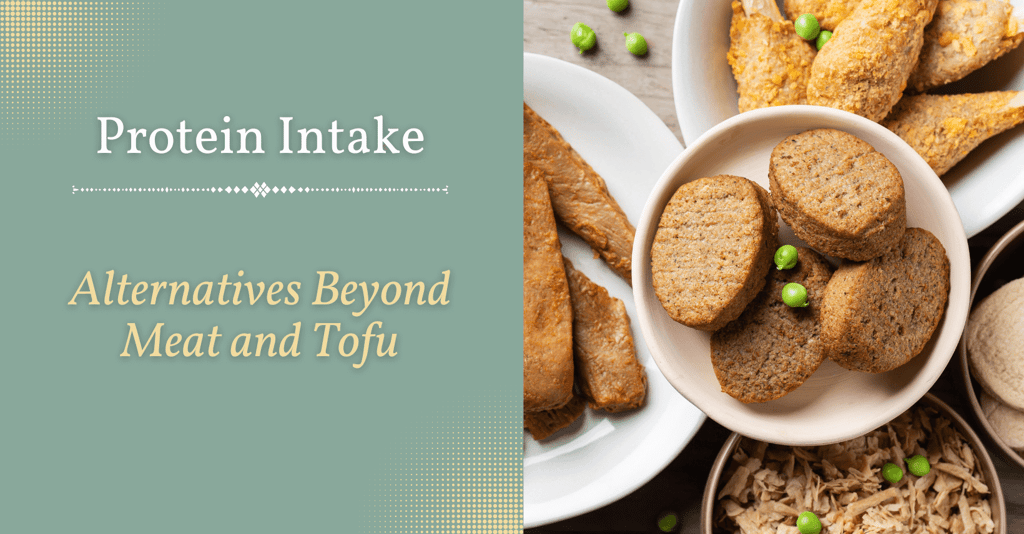Struggling to Get Enough Protein Without Meat and Tofu? Try These Alternatives
9/20/20232 min citit


Are you struggling to meet your protein needs without relying on meat and tofu? You're not alone. Many people are exploring plant-based diets, whether for ethical, environmental, or health reasons, and finding alternative protein sources can be a challenge. But fear not, because there are plenty of delicious and nutritious plant-based options available to help you meet your protein goals. In this article, we'll explore some creative and tasty ways to incorporate plant-based proteins into your diet.
1. Legumes:
Legumes are a diverse group of plants that includes beans, lentils, chickpeas, and peas. They are rich in protein, fiber, and various essential nutrients. Consider making a hearty lentil stew, a spicy chickpea curry, or a classic three-bean chili. These dishes are not only protein-packed but also satisfying and flavorful.
2. Quinoa:
Quinoa is a versatile grain that is actually a complete protein, meaning it contains all nine essential amino acids. It can be used in salads, stir-fries, or as a base for veggie bowls. The nutty flavor and slightly crunchy texture make it a favorite among plant-based eaters.
3. Nuts and Seeds:
Almonds, peanuts, chia seeds, and pumpkin seeds are excellent sources of plant-based protein. Sprinkle them on your morning oatmeal, blend them into smoothies, or make your own nut butter. You can even use them as a crunchy topping for salads or roasted vegetables.
4. Seitan:
Seitan, also known as wheat gluten, is a high-protein meat substitute made from gluten, the protein found in wheat. It has a meaty texture and is often used to create plant-based versions of traditional meat dishes like stir-fries, kebabs, and sandwiches.
5. Tempeh:
Tempeh is a fermented soybean product that is a great alternative to tofu. It has a nutty and slightly earthy flavor and can be sliced, marinated, and used in various dishes. Try it in a stir-fry, on a sandwich, or even crumbled as a topping for salads or pasta.
6. Edamame:
Edamame are young soybeans that are both delicious and nutritious. They are commonly found in the freezer section of grocery stores and make for a quick and easy protein-rich snack. You can also add them to salads or pasta dishes for an extra protein boost.
7. Plant-Based Protein Powders:
If you're in a rush or need a convenient post-workout protein source, consider plant-based protein powders. These can be blended into smoothies or mixed with water or plant-based milk for a quick protein fix. Look for brands that use ingredients like pea, rice, or hemp protein.
8. Dairy Alternatives:
Many dairy alternatives, such as almond milk, soy milk, and oat milk, are fortified with extra protein. Use these as a base for your morning cereal, oatmeal, or smoothies to increase your daily protein intake.
9. Nutritional Yeast:
Nutritional yeast is a savory and cheesy-tasting seasoning that is also a great source of protein. Sprinkle it on popcorn, pasta, or roasted vegetables to add flavor and a protein boost.
10. Vegetables:
While not as protein-dense as some other options, vegetables like broccoli, spinach, and Brussels sprouts still contribute to your overall protein intake. Incorporate them into your meals for added vitamins, minerals, and protein.
If you have any questions or need some assistance, feel free to submit a comment or send us a message here.
In Conclusion
There are numerous plant-based protein sources available to those looking to reduce their reliance on meat and tofu. Experiment with different ingredients and recipes to discover what works best for your taste buds and nutritional needs. Remember that variety is key to ensuring you get a wide range of nutrients. With a bit of creativity and exploration, you'll find that plant-based eating can be delicious, satisfying, and protein-rich without relying on meat and tofu.
